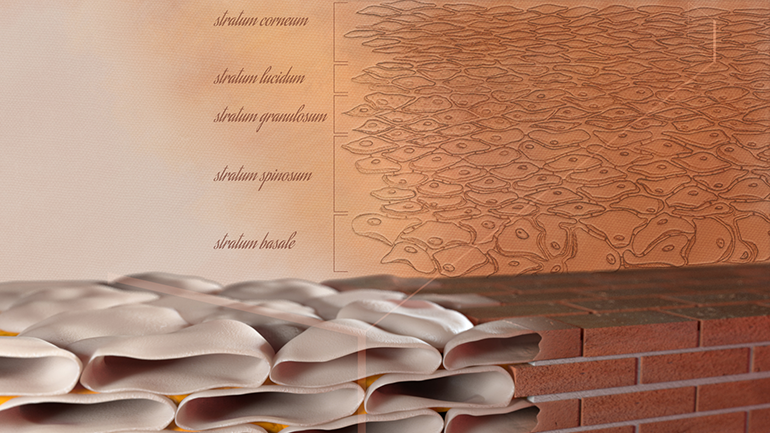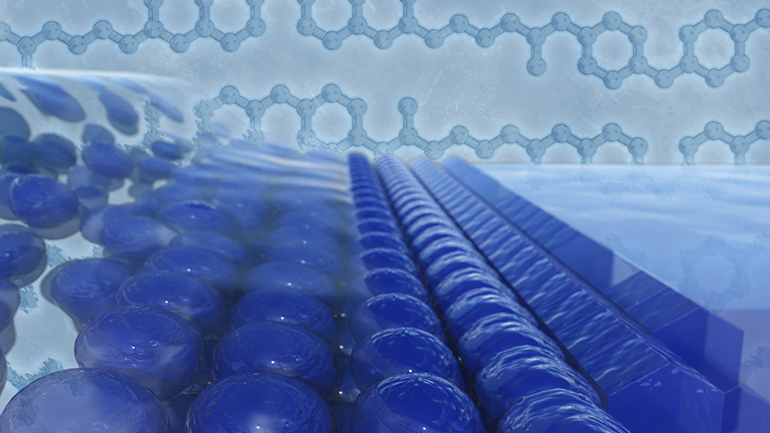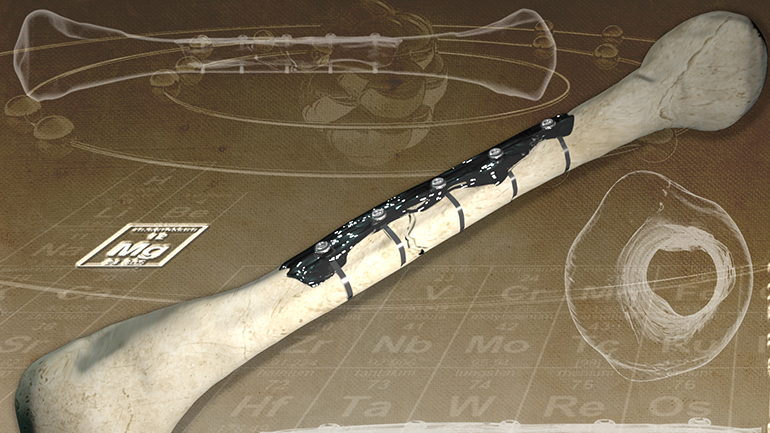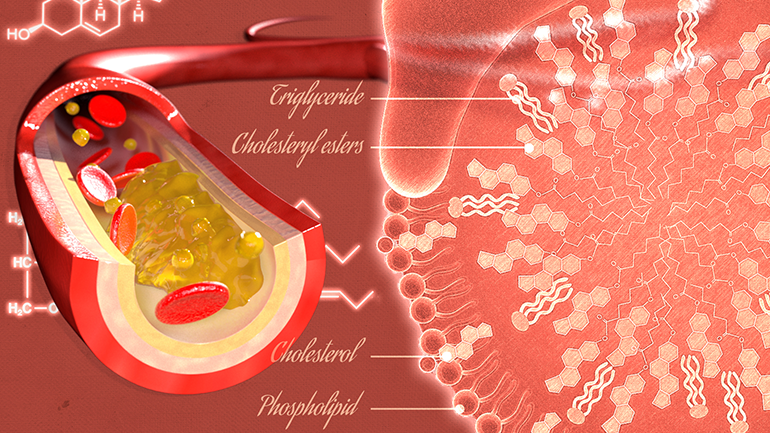We use cookies on this website. Cookies help us deliver the best experience on our website. Read about cookies.
-
- Education
- Education
- Programmes and courses
- Applications and admissions
- Tuition fees
- Scholarships
- Exchange studies at Malmö University
- Study Guidance
-
- After admission
- After admission
- Moving to Malmö
- Pre-orientation
- Arrival guide
-
- About studies at Malmö University
- About studies at Malmö University
- Why choose Malmö University
- Understanding university studies
- Connect with our students
On the page -
- Research
- Research
-
- Doctoral studies
- Doctoral studies
- Doctoral courses
-
- Doctoral schools
- Doctoral schools
- Doctoral school: Education, Learning and Globalisation
- Doctoral school: The National Research School for Professionals in Social Services
- Doctoral school: Learning in Multicultural Societal Contexts
- Doctoral school: ComBine
- Doctoral school: Swedish National Graduate School in Science and Technology Education Research
- Doctoral school: Relevancing Mathematics and Science Education (RelMaS)
- Doctoral school: Sustainable Movement Education
- Doctoral school: Finding ways in a time of great future challenges (FinnFram)
- Doctoral school: Pedagogy and Vocational Skills
- Doctoral school: Culturally Empowering Education through Language and Literature
- Research subjects
-
- Research centres
- Research centres
- Biofilms Research Centre for Biointerfaces
- Citizen Health
- Imagining and Co-Creating Futures
- Institute for Urban Research
- Malmö Institute for Migration Studies
- Literacy and Inclusive Teaching
- Centre for Work Life Studies
- Sustainable Digitalisation Research Centre
- Centre for Sexology and Sexuality Studies
-
- Research publications
- Research publications
- Search publications
- Malmö University Press
- Research events
- Participate in a research study
- Coffee Break Quiz
On the page -
- Collaboration and Innovation
- Collaboration and Innovation
- Innovation
- Collaboration with students
-
- Collaborate with researchers
- Collaborate with researchers
- Labs and facilities
- Culture collaboration
- Support Malmö University
- Alumni & Friends
On the page -
- About us
- About us
-
- Faculties and departments
- Faculties and departments
-
- Faculty of Culture and Society
- Faculty of Culture and Society
- Department of Urban Studies
- Department of Global Political Studies
- School of Arts and Communication
-
- Faculty of Education and Society
- Faculty of Education and Society
- Department of Childhood, Education and Society
- Department of Sports Sciences
- Department of Natural Science, Mathematics and Society
- Department of School Development and Leadership
- Department of Culture, Languages and Media
- Department of Society, Culture and Identity
-
- Faculty of Technology and Society
- Faculty of Technology and Society
- Department of Computer Science and Media Technology
- Department of Materials Science and Applied Mathematics
-
- Faculty of Odontology
- Faculty of Odontology
- Master's programmes in Dental Science
- University Dental Clinic
- Management and decision-making paths
-
- Vision, objectives and strategy 2025
- Vision, objectives and strategy 2025
- Global engagement
- Sustainability
- Widened recruitment and participation
- Quality assurance work at the University
-
- Malmö Academic Choir and Orchestra
- Malmö Academic Choir and Orchestra
- Student work – video pieces
-
- Annual Academic Celebration
- Annual Academic Celebration
- Academic traditions
- Meet our new professors
- The University in a troubled world
On the page
Labs and facilities
The benefits are many when academia, industry, public sector and NGOs meet and collaborate. By cooperating with our researchers, you can benefit from the University's expertise to complement your research and development.
Research collaboration
Do you want to cooperate with one of our researchers or a research team on a project? Do you need help with product development or an investigation? Collaborating with researchers at Malmö University is an opportunity to develop your ideas, obtain a better basis for decision making and develop your business with recognised methods and theories. Many of our researchers have been, and some are still, active in both the private and public sectors. We have experts in many fields, which are listed on this page, and you are welcome to contact us to discuss a future partnership.
Would you prefer to collaborate with our students and programmes? Contact Anna Bogeskär Brandt.
Open Lab Skåne – we help you get access to laboratories and equipment
Within Open Lab Skåne at Malmö University you get access to equipment in the fields of material science and chemistry. In addition, it is possible to rent lab space in chemical labs for different periods of time.
Open Lab is an interesting arena for interactions between academia and industry. The well-equipped labs at Open Lab has enabled us to perform advanced chemical analysis.
Anna Holefors, CEO In Vitro Plant - tech
About us
At Open Lab Skåne, you will find equipment for studies ranging from whole tissue to nano scale and expertise within materials science, physical and colloid chemistry, analytical and synthetic chemistry, biochemistry, cell and molecular biology. We also support companies interested in neutron and X-ray scattering techniques.
The labs and equipment at Open Lab have been important for our R&D activities, a great opportunity for start-up companies!
Robin Thiberg, CEO Innoscentia
The mission of Open Lab Skåne is to facilitate innovation by opening up our laboratories and enabling access to equipment and expertise. The project is funded by the European Regional Development Fund and Region Skåne. In addition, Open Lab Skåne is supported by Medeon, Medicon Village, CLUK, the city of Malmö, the city of Lund, and Sten K Johnson Foundation.
Contact Open Lab Skåne
For questions and more information please contact Cecilia Cederfur.
MAX IV and ESS – we help you get the most out of the facilities
Large scale facilities such as the MAX IV synchrotron and the European Spallation Source (ESS) in Lund, provide various tools for the study of structure and function of matter. Often described as super microscopes, these two facilities promise to show unprecedented information on the world around us. With this prospect comes many opportunities for the development of novel materials and processes that can greatly improve many aspects of our lives and society as a whole.
With our expertise and your ideas and ambitions, we could develop technologies which could change lives. Please contact us if you want to know more about this opportunity.
New possibilities with a top notch instrument
A new investment in our instrument park enables specific characterisations of nano- and micro-structure of materials. A XEUSS 3.0 X-ray scattering instrument from Xenocs giving simultaneous access to small-angle and wide-angle scattering was recently purchased and installed, along with a range of advanced sample environments.
This instrument is especially suited for characterising the overall size and shape as well as the internal structure of biomolecules, nanoparticles and liquid crystalline phases including those made out of lipids and fats. The instrument allows studies of liquid samples as well as gels in temperature- and humidity-controlled environments. Moreover, thin-film structures can be characterised in situ via its grazing-incidence reflection geometry.
Besides basic research within the fundamental understanding of structure and assembly pathways, the XEUSS 3.0 is suited for application-driven samples such as drug delivery, drug formulation and biomaterials. A particularity of this system is that it enables to preparation and complement of experimental campaigns at synchrotrons such as MaxIV. First, the simple accessibility to the laboratory instrument enables measurements just in time, for quality checks during synthesis protocols as well as for complementary information on unique samples from other experimental campaigns. Second, the usage of complex sample environments such as humidity control requires long setup and data collection times, which can more easily be performed in the laboratory than at synchrotrons. Finally, the XEUSS 3.0 offers great opportunities to start projects and collect preparatory data to justify applications for grants and measurement time.
In this context, the XEUSS 3.0 provides an effective bridge between the research topics at the BRCB to large-scale facilities such as MaxIV and ESS. Furthermore, the instrument also offers strategic opportunities beyond Malmö University, since our goal is to allow companies and partners to try out ideas in collaboration with our experts before starting expensive and elaborate projects at large-scale facilities.
Contact
Inspirational examples of research collaborations
Skin – the final frontier

Extensive research has been carried out at Malmö University into the development of non-invasive or minimally invasive topical applications — whether that be for medical or cosmetic purposes. Collaborating with other universities and industry partners, this has involved utilising the MAX IV facilities.
Skin responds to changes in the environment, for example change from dry skin in a cold and dry climate to moist, wrinkly skin after a long hot bath, or from the application of a cosmetic cream to alleviate dry skin conditions. From a scientific perspective, it is relevant to understand how and why the skin barrier is affected by changes of the surrounding conditions and how this influences the function of the skin barrier. This can in turn help us understand the uptake of drugs applied to the skin surface, progression of skin disorders and skin health in general.
X-ray diffraction is a compelling technique used to investigate the structural features of the skin barrier. In our research, understanding how this structure-function relationship is influenced by parameters such as relative humidity, temperature, or application of common substances that are used in commercial skin care products is of particular relevance.
Thin films are all around us

Thin polymeric films have numerous applications in a variety of fields, such as packaging, membranes, paints and coatings, adhesives, electronics and textiles, as well as cosmetics and biomedical devices. They can be prepared from a wide range of different formulations. Of specific interest to Malmö University researchers are latex films. For the understanding of the performance of these films, it is of high importance to characterise the structure of the film’s outer layer.
Typical sizes for polymer particles used for waterborne coatings are in the 50-200nm range. Additionally, smaller structures may also be found inside latex films. Small-angle X-ray scattering is a technique that can be used for particles in this size range and was used to probe the merging of polymer particles during the film formation as well as to detect the presence of smaller structures within the films.
One of the weaknesses of standard X-ray scattering experiments is that they require sample dimensions in, at least, the millimetre range. This is above what is relevant for most coating applications and subsequently results in longer drying times and difficulties in monitoring the film formation process. In this regard, a grazing incidence angle geometry stands out as a more suitable technique. This technique, where the incident X-ray beam strikes the sample under a small angle, can be used to provide structural information of nm-thick films. This technique is currently explored to monitor the formation of latex films in real-time.
Understanding superalloys
Metallic alloys are a combination of two or more metallic or other elements, such as steel (a combination of iron and carbon) and bronze (a combination of copper and tin). A typical family of alloys — that has superior properties in comparison with other alloys — are the so-called super or high-performance alloys.
These alloys are characterised by excellent mechanical properties and can resist high mechanical load at elevated temperatures. A typical application for such alloys is in turbine engines, heat exchanges and power plants.
From a standard tensile test, the mechanical properties for an alloy can be measured at different temperatures and for different conditions, such as solution treated, or age heat treated. This can provide information on the precipitates impact on the mechanical properties of the alloy. However, this method does not directly measure the precipitate size, the volume fraction and how they develop during a heat treatment which is important to understand when developing new heat treatments and for developing new superior superalloys.
High-energy synchrotron X-rays enable in-situ measurements of precipitation in alloys at different thermal and mechanical loadings. This can provide information on the particle size distribution, the volume fraction of the precipitates and their shape. A compact instrument able to measure the response of the precipitates during mechanical loading has been developed through a joint project which included academics from Malmö University. The advancement of the technique enables scientists to understand the mechanism for precipitation and how they interplay with the alloy of matter, which can eventually lead to new heat treatments that can save energy.
Bone healing with metals that gradually dissolve

Synchrotron-based X-ray tomography is a powerful and non-destructive imaging method with a wide range of applications that span biomedicine, materials science, engineering and nanotechnology; it allows measurements of the internal structure of materials in 3D at high speed. At Malmö University, the technique has been utilised to study: bone growth and healing, the studies of wood coatings, and the penetration of drugs and cosmetics through the skin.
One of the most common surgeries in orthopaedics is the internal fixation of fractures with metal implants. This includes pins, plates, screws and rods, which are used to reconnect and hold together the fractured parts and allow them to heal. Implants are also used for bone reconstruction in cranial and facial surgery. The most used and well-functioning materials are titanium alloys and stainless steel. A major drawback with these materials is the need for their removal after the bone heals. For the patient, this often involves a second surgery, with all the risks and complications associated with it. Designing self-degrading implants that can fixate fractures and then disappear by themselves when the bone is healed is therefore of significant interest.
Magnesium is a metal that is naturally present in the body and has strength similar to that of the bone. It also has the property of gradually dissolving in the body to form non-toxic products. It shows great promise as an implant solution for use in load-bearing areas of the skeleton. In fact, the constant release of Mg ions in the fracture site could potentially have a positive stimulus for bone growth and magnesium-based implants were therefore produced and tested as bone implants.
Through the use of synchrotron X-rays, images can be produced at a rapid rate allowing scientists to follow implant degradation in a time-lapse manner.
Good and bad cholesterol

Atherosclerosis, where plaques of fats and cholesterol build up in the arteries, can lead to heart attacks and strokes. Certain lipoproteins, the ‘good’ and ‘bad’ cholesterol, function as cholesterol and fat transporters in the blood and are currently used as clinical markers for disease. Measuring the total levels of cholesterol or lipoprotein particles does not accurately predict the risks of developing atherosclerosis as many people suffer from cardiovascular disease even though they show normal lipid clinical profiles.
In order to understand the molecular mechanisms behind plaque build-up, it is necessary to understand both the lipoprotein particle structure and the structure of the artery wall during their interplay. However, both these systems are complex molecular assemblies and determining their detailed structure has proved to be extremely challenging.
One of the main advantages of neutrons is that they see hydrogen and deuterium atoms differently. This in turn allows for the highlighting of different parts of a complex biological system individually.
For interactions between native lipoproteins and the arterial wall, neutron scattering in combination with selective deuteration has provided an elegant way to systematically study each component individually. Such knowledge will not only aid in improving current diagnostic tools, but could lead to the development of more specific drugs.
Neutrons help understand nature’s own lubricant
Neutron reflection is a powerful technique employed to see deep into the matter and to deliver profound information on surfaces. By developing a new instrument that can provide a way to study the lubrication of thin films under both confinement and shear, we can perform neutron reflectometry studies and a technique known as GI-SANS studies. These can provide in-plane information near the surface of thin films.
Throughout history, we have been using oil-based lubricants to help against damage and tear. Our own body, however, has developed water-based systems to grease its sheared surfaces. These bio-lubricants, such as saliva and mucus, outperform any man-made oil-based greasing agents. But why are they so extremely difficult to imitate? Understanding how nature overcomes the drawbacks of water as a lubricant is one of the projects at Malmö University that can lead to the design of novel lubricating formulations.
Shear is expected to initiate changes in the structure of thin films and the characterisation of these changes is critical for understanding their lubrication mechanisms. This, on the other hand, is essential for the prediction of the lubricating performance of thin films based on their composition and therefore the rational development of novel lubricating formulations.
The methodology that enables studies of the bio-lubricants found in our body can give fundamental knowledge of their structural and mechanical characteristics. This can lead to the design of non-toxic, aqueous lubricating systems with novel biomedical applications and help replace the highly contaminant oil-based lubricants currently used in our engineering practices. It will also allow for the development of new treatments in several diseases that are associated with changes in our bio-lubricating properties.
I can't believe it's butter

Fat crystallography is very important for numerous applications in industries spanning food, cosmetics and pharmaceuticals. Fats rheological and mechanical properties depend largely on the structure of the fat crystal networks. The increasing interest in lipid excipients for the development of taste-masked and modified drug release formulations is often compromised by release instability. Further mechanistic understanding in this regard is also required to facilitate larger-scale applications.
Sweden’s most famous battleship, the Vasa, was floated in 1628 and salvaged from the seabed with a close to intact hull in 1961. Archaeologists were faced with a largely undisturbed 4-storey structure to excavate. Among the findings, on-board were various containers with butter. The butter was found to be very salty and had apparently turned rancid from 333 years of storage at four degrees centigrade. A sample from a smaller tin canister was later analysed by Malmö University researchers.
In 1991, structural investigations were carried out using the X-ray equipment available to the researchers at that time. Complementary chemical analysis confirmed that a large part of the main constituent in the butter, the triglycerides, had degraded to free fatty acids, (mono- and diglycerides). The total fatty acid composition, however, deviated from that of fresh butter and they came to question whether the tin canisters had really been watertight or if some of the content had dissolved into the seawater.
The evolution of new generations of X-ray equipment has provided us with much more powerful tools than the ones we used for the Vasa study. Access to synchrotron light at MAX IV can also be combined online with other complementary techniques. The high-energy X-rays of the synchrotron permit the recording powder diffraction patterns in as little as two seconds, meaning that thermally-induced changes can be accurately quantified and additional insight on the nature of phase transitions obtained. Such detailed knowledge cannot be obtained from existing laboratory instruments, which require a much longer collection time.
Contact us about MAX IV and ESS
Let's collaborate! For questions and more information, please contact Thomas Arnebrant.

